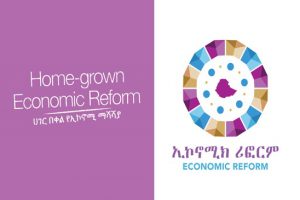
Due to the tremendous efforts of different stakeholder, the overall participation of women is increasing gradually, yet they are not equally beneficiary with men in various aspects.
To address the inequality various government offices have prepared a 10- year road map that aims to empower them economically which in turn leads to raising their political and social role.
Asrat Tereda, Coordinator of Education and Training at the Federal Plan and Development Commission said that his sector is striving to increase women empowerment on decision-making process working integrates with stakeholders.
Research shows that Ethiopian women enable to decide only 30 percent by themselves while the number is close to 62 percent with agreed on their husband. This indicated that they have remains more to achieve 50 percent of decision making by them.
According to Aserat, income and decision making has a directly proportional relationship as the increasing of economy enable to increase decision making. The reverse is also true as low income is the cause of low participation in decision making.
In Ethiopia, lack of technology utilization on women, the absence of organized information, law inspection methods and the like are the major challenges which hinder to increase women decision making.
He asserted that identifying the role of women, giving a chance to technological advancement, and organizing a document is crucial to increase women empowerment in Ethiopia.
Ministry of Women, Children, and Youth are one of the participants of the road map preparation taskforce. Ketema Legesse, Gender Affairs Expert at the Ministry told The Ethiopian Herald that the road map is being prepared based on the situation of women concerning economic, social, and political empowerment in Ethiopia.
Due to this reason, he actively participated in the level of women participation through agricultural sectors, trade, manufacturing sectors, small enterprise, cooperatives, and the like.
Particularly, lack of integration among sectors, the attitudes of society towards women, market linkage, shades, 20 percent advance saving to become an entrepreneur are the main factors that hinder women’s economic empowerment.
On the other hand, the issue of women was left as the sole task of the Ministry of Women, Children, and Youth during the past many years. This is another serious challenge for women’s economic equality.
Currently, the issue of women is the matter of citizens and governmental sectors as well as non-governmental sectors. This is playing a crucial role in the ongoing steps that will ensure women empowerment and succeeding the expected result which achieves 50 percent of decision making on the economic issue, he added.
Tariku Teka, Dairy Development Director with the Ministry of Agriculture on his part said that women are not adequately benefited from animal production due to the dominance of men. In the aspect of animal protection, women take the lion’s share, starting from animal feed supply, cleaning wastes, and providing water even by fetching from a long distance due to its sensitivity on milk and butter.
However, when the cattle become highly productive, like when their daily yield of milk grows up from two liters to eight liters per cow, they do not receive the proportional or fair benefit.
As to the Director, among the total number of 17 million households in the rural parts of Ethiopia, 13 million of them are livelihoods through animal production from camel, goat, cow and the like, according to the Central Statistical Agency. This has close to 77 percent converged while 26 percent up to 40 per cent is the sources of income generation on the given family.
Training couples, identifying the root causes of problems and indicating the solution, modernizing agricultural sectors, and the like are playing an indispensable role for women economic empowerment, Tariku noted.
Neteru Wondosen, Gender Affairs Director at Ministry of Finance on her part said that the participation of women on economic, social, and political affairs is increasing gradually but they are not yet equal with men due to various reasons.
For example, in the aspect of the macro economy, women are economically poor compared to men, there is an imbalance of land ownership, and inadequate significance of agricultural extension, technology and the like. Women indeed have very low participation in the construction and manufacturing sectors due to capital constraints, inaccessibility of information, among others.
On the other hand, the road map, perspective plan, initial from the fact of international monetary fund research, central statistical agency and international reports. The research shows that women are seriously affected by the overall decision-making process.
The Ethiopian Herald September 14, 2019
BY MESERET BEHAILU





